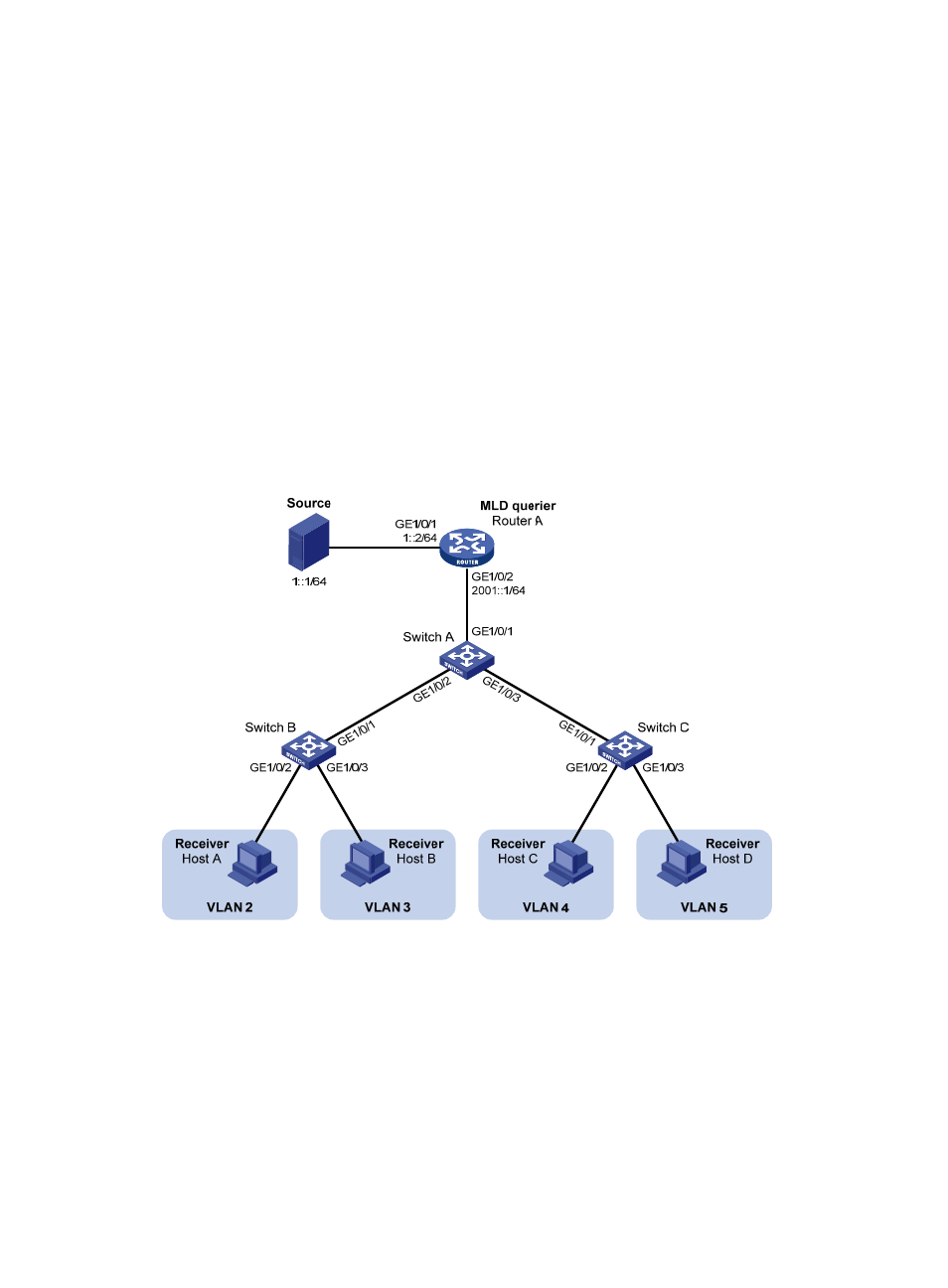Ipv6 multicast vlan configuration examples, Network requirements, Configuration procedure – H3C Technologies H3C S10500 Series Switches User Manual
Page 326

311
IPv6 multicast VLAN configuration examples
Sub-VLAN-based multicast VLAN configuration example
Network requirements
•
As shown in
, Router A connects to an IPv6 multicast source through GigabitEthernet
1/0/1 and to Switch A through GigabitEthernet 1/0/2.
•
MLDv1 runs on Router A, and MLDv1 snooping runs on Switch A. Router A acts as the MLD querier.
•
The IPv6 multicast source sends IPv6 multicast data to the IPv6 multicast group FF1E::101. Host A,
Host B, Host C, and Host D are receivers of the IPv6 multicast group. The hosts belong to VLAN 2
through VLAN 5 respectively.
•
Configure the sub-VLAN-based IPv6 multicast VLAN feature on Switch A so that Router A just sends
IPv6 multicast data to Switch A through the IPv6 multicast VLAN and Switch A forwards the traffic
to the receivers that belong to different user VLANs.
Figure 80 Network diagram for sub-VLAN-based IPv6 multicast VLAN configuration
Configuration procedure
1.
Enable IPv6 forwarding and configure IPv6 addresses
Enable IPv6 forwarding on each device and configure an IPv6 address and address prefix for each
interface as per
. (details not shown)
2.
Configure Router A
# Enable IPv6 multicast routing, enable IPv6 PIM-DM on each interface and enable MLD on the host-side
interface GigabitEthernet 1/0/2.
[RouterA] multicast ipv6 routing-enable
